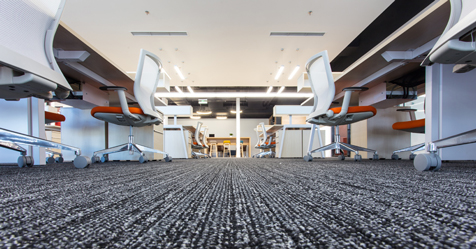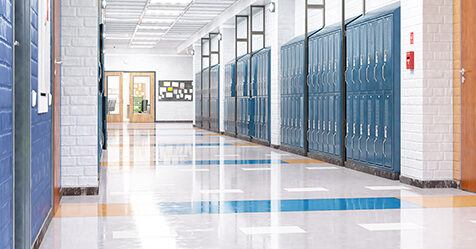Proper carpet care can be a complicated part of commercial cleaning and facility management.
A myriad of cleaning choices are available, and deciding what carpet cleaning process or chemical to use can be a confusing task.
Below, different experts weigh in with their top tips for commercial carpet cleaning.
Commercial Carpet Cleaning Tip #1
Up-to-date vacuums can reduce cleaning times in the different commercial spaces, according to Eric Hickman, a cleaning consultant and product manager for Powr-Flite.
In some environments, traditional upright vacuums cannot be used efficiently due to furniture and other impediments.
For example, an office with clusters of work stations will slow down the vacuum process unless a cleaner is equipped with a backpack vacuum.
Backpack vacuums are lighter and more comfortable to use, Hickman says.
This style of vacuum works well in congested office environments, and quick access to the tools and accessories can reduce overall vacuuming times.
Commercial Carpet Cleaning Tip #2
Carpeting should be vacuumed as much as possible — as often as every day, Doyle Bloss, marketing manager for U.S. Products and Hydramaster states.
If daily vacuuming seems extreme, managers and BSCs should realize that most floor covering manufacturers, and even the U.S. Environmental Protection Agency, recommend vacuuming carpet more often than once or twice a week.
Foot traffic and airborne impurities like dust, pollen and other contaminants end up in carpet fiber along with hair, dander, skin and dust mites.
The most effective way to remove this dry soiling is to plan on vacuuming carpet as frequently as possible, Bloss says.
Commercial Carpet Cleaning Tip #3
Provide manual spotting tools to employees so that they can perform regular spot removal, Gary Borofsky with Bonnit Brush Systems states.
These spotting tools should be available to employees as they complete general cleaning tasks.
Access to these tools will prevent the need to bring out larger cleaning equipment just for a couple of carpet spots.
With daily cleaning and spot treatment, these small stains will not accumulate and create a dirty carpet.
“Routine maintenance is the key to carpet appearance and longevity,” Borofsky notes. “If we don’t follow good work habits, things usually cost more and have a shorter lifespan.”
Commercial Carpet Cleaning Tip #4
Look for certified products when making the change to sustainable carpet cleaning, Stephen Lewis, technical director for MilliCare, recommends.
Just because a product or service is green certified, that doesn’t mean it won’t damage carpet materials during the cleaning process.
There are two organizations that certify fiber-safe products and processes for sustainable carpet care, according to Lewis.
The first, the green WoolSafe product certification, guarantees wool carpet will not be damaged while ensuring sustainability.
The second is the Carpet and Rug Institute’s (CRI) Seal of Approval program that shows the safety of the labeled chemicals on nylon carpet.


